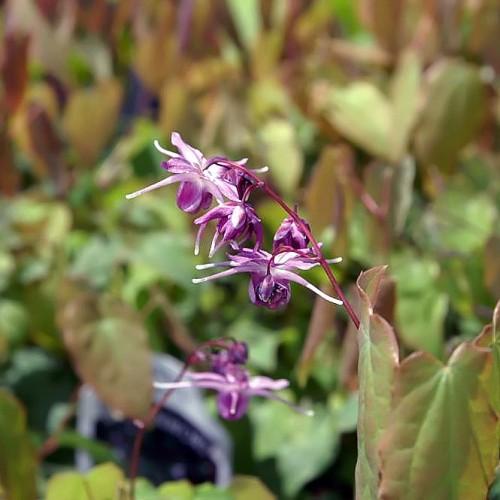
bishop's hat
Epimedium grandiflorum 'Pierre's Purple'
Cycle:
Herbaceous Perennial
Watering:
Minimum
Hardiness Zone:
5 - 8
Flowers:
Flowers
Sun:
Part shade,full shade
Leaf:
Yes
Growth Rate:
Low
Maintenance:
Low
Drought Tolerant:
Yes
Care Level:
Medium
watering
Water bishop's hat plants around once a week, making sure the soil stays lightly moist. These plants prefer a lightly moist soil rather than a soggy 1, so water sparingly. Never allow the soil to dry out completely in between waterings, as it may cause the plant to become stressed or even die. During the hot summer months, they may need to be watered more frequently. Bishop's hat may also require more frequent watering if they are planted in containers or in a dry, well-drained area.
sunlight
Bishop's hat (Epimedium grandiflorum 'Pierre's Purple') should be grown in semi-shade to full shade and will thrive in gardens where it receives several hours or even all day of partial sunlight. In full sun, the leaves may scorch, and the plant will need protection from intense afternoon light. It is best to give this plant 4-6 hours of indirect sunlight per day, such as in a partly shaded location beneath a canopy of trees. It is important to avoid extreme shade as Epimedium grandiflorum 'Pierre's Purple' needs some sunlight to produce the best flowers.
pruning
Bishop's hat (Epimedium grandiflorum 'Pierre's Purple') should be pruned in late winter or early spring before the new growth appears. Pruning should include removing any damaged, diseased, or dead stems, and cutting back any long shoots to about 4 inches from the soil. This will help keep the plant from becoming too leggy and keep it looking neat. Additionally, thinning out overcrowded stems will promote better air circulation and encourage new flowering stems. Finally, trimming off all of the spent flower stalks and seed pods will allow the plant to use its energy to produce more flowers come the next season.
